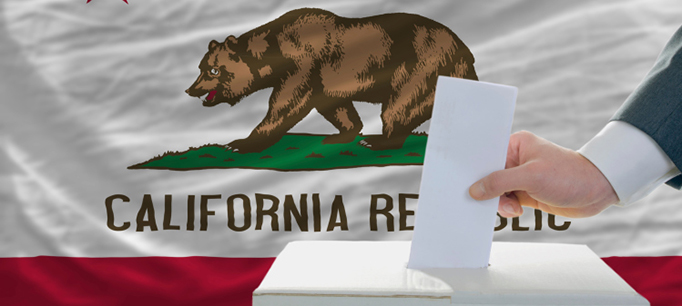This election marked the third outing for the state’s “top two” primary system. The system allows voters to choose any candidate they like in the primary, with the top two vote getters advancing to the fall. One of the reform’s major goals is to promote moderation by removing the partisan barriers that structure candidate and voter choices. What has this election suggested about the reform?
The two candidates who advance to the fall election can be—and often are—from the same party. The most visible example this year was the US Senate race between Democrats Kamala Harris and Loretta Sanchez. It was the first statewide same-party race, and many did not know what to expect. Of the two candidates, Kamala Harris was seen as a traditional liberal Democrat, while Loretta Sanchez made more efforts to appeal to Republicans. In the end, Kamala Harris won by a wide margin—mirroring the substantial margins in most public opinion polls. Polling had also suggested that between a third and half of Republicans were likely to opt out of casting a ballot in this race. At the time of this writing, about 1.1 million more ballots have been cast for president than for US Senate, a number roughly consistent with these polling estimates.
There were also 27 down-ballot same-party races in this cycle, in line with 25 in 2014 and 28 in 2012. These races continue to be a lot closer than cross-party contests: this year, an average of 32 points separated the candidates in cross-party races, compared to 25 points for candidates of the same party. About a quarter of this year’s same-party races were decided by less than 10 points, also similar to previous years.
At the same time, the share of cross-party races decided by narrow margins has been falling over time—from 18% in 2012 to 15% in 2014 to just 11% this year—and is rapidly approaching the average share during the previous redistricting cycle (7%). This most likely reflects the aging of the redistricting plan, which was drawn by an independent commission in 2011. At the beginning the plan was very disruptive to established patterns, but as candidates have come to understand which seats are likely to be competitive and which are a stretch, the level of cross-party competition overall has declined.
Establishment candidates did well this year, as they have on average under the top-two reform. Just 6 out of 123 incumbents lost, and the average margin of victory for incumbents was the same as before the reform. This is not to say that the top-two primary has not altered the playing field in some cases. In fact, three of the six losing incumbents ran in same-party races. But the broader field of play is similar to the past.
Same-party races were in part expected to promote contests between the moderate and liberal/conservative wings of each party. It is not clear that this has happened much on the Republican side, but there are typically several same-party contests that feature this dynamic on the Democratic side. In this election cycle, most of these contests were won by the more moderate, business-backed Democrat. Nonetheless, in at least two cases—Raul Bocanegra vs. Patty Lopez in Assembly District 39 (San Fernando Valley) and Eloise Reyes vs. Cheryl Brown in Assembly District 47 (San Bernardino County)—a less traditional Democratic incumbent lost to a more traditional Democratic challenger (Bocanegra was technically a challenger, but he was also a former incumbent).
In short, this year’s top-two outcomes mostly fit the post-reform pattern, but there were some interesting deviations. It is still early in this reform’s life, so it will be important to keep monitoring it to understand how it unfolds.


